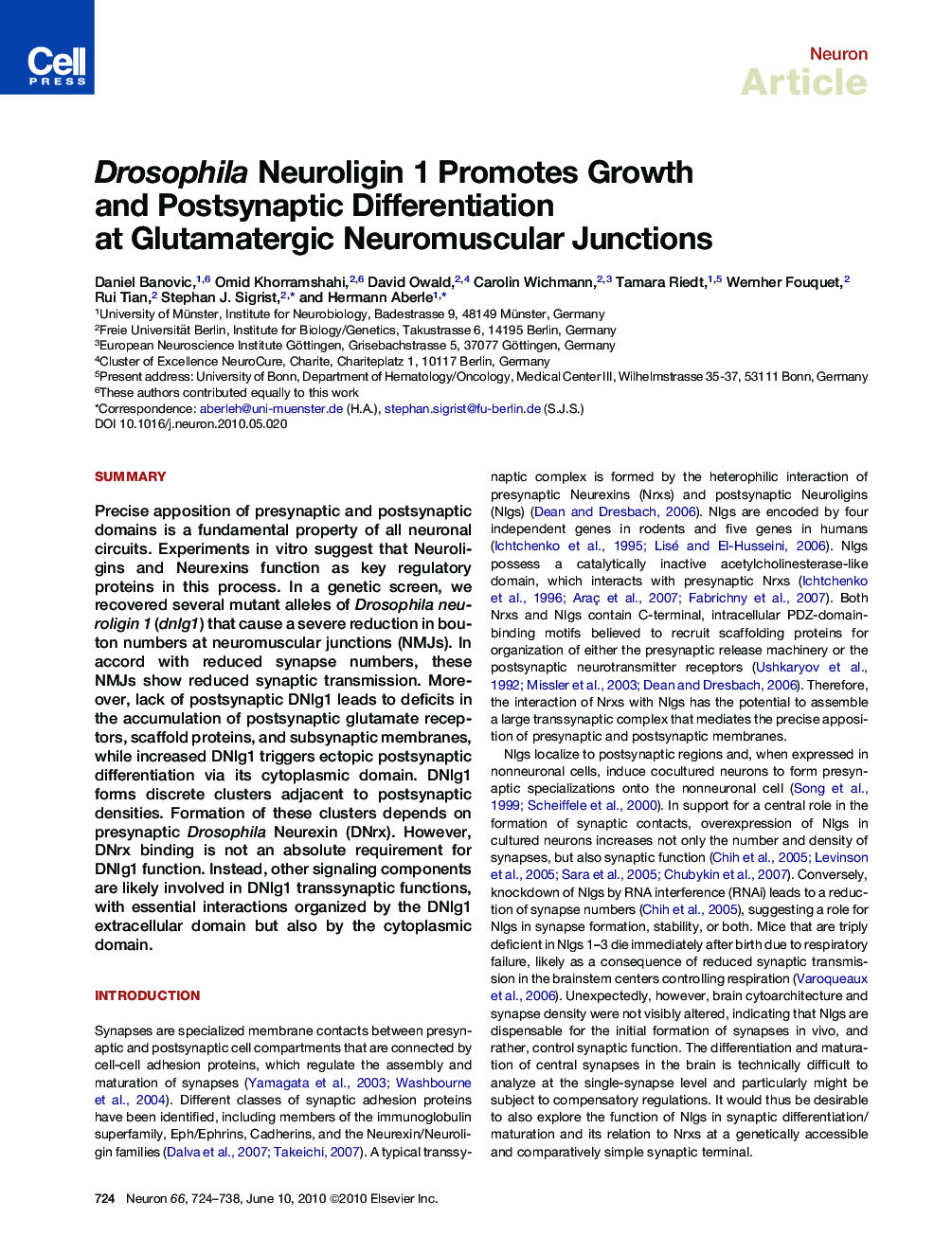| Article ID | Journal | Published Year | Pages | File Type |
|---|---|---|---|---|
| 4321941 | Neuron | 2010 | 15 Pages |
SummaryPrecise apposition of presynaptic and postsynaptic domains is a fundamental property of all neuronal circuits. Experiments in vitro suggest that Neuroligins and Neurexins function as key regulatory proteins in this process. In a genetic screen, we recovered several mutant alleles of Drosophila neuroligin 1 (dnlg1) that cause a severe reduction in bouton numbers at neuromuscular junctions (NMJs). In accord with reduced synapse numbers, these NMJs show reduced synaptic transmission. Moreover, lack of postsynaptic DNlg1 leads to deficits in the accumulation of postsynaptic glutamate receptors, scaffold proteins, and subsynaptic membranes, while increased DNlg1 triggers ectopic postsynaptic differentiation via its cytoplasmic domain. DNlg1 forms discrete clusters adjacent to postsynaptic densities. Formation of these clusters depends on presynaptic Drosophila Neurexin (DNrx). However, DNrx binding is not an absolute requirement for DNlg1 function. Instead, other signaling components are likely involved in DNlg1 transsynaptic functions, with essential interactions organized by the DNlg1 extracellular domain but also by the cytoplasmic domain.
► Unbiased screening uncovers Drosophila Neuroligin 1 as essential for NMJ morphology ► DNlg1 promotes synaptic growth and postsynaptic differentiation in vivo ► Precise apposition of the pre- and postsynaptic domain is lost in dnlg1 mutants ► DNlg1 forms a distinct compartment adjacent to glutamate receptor fields
